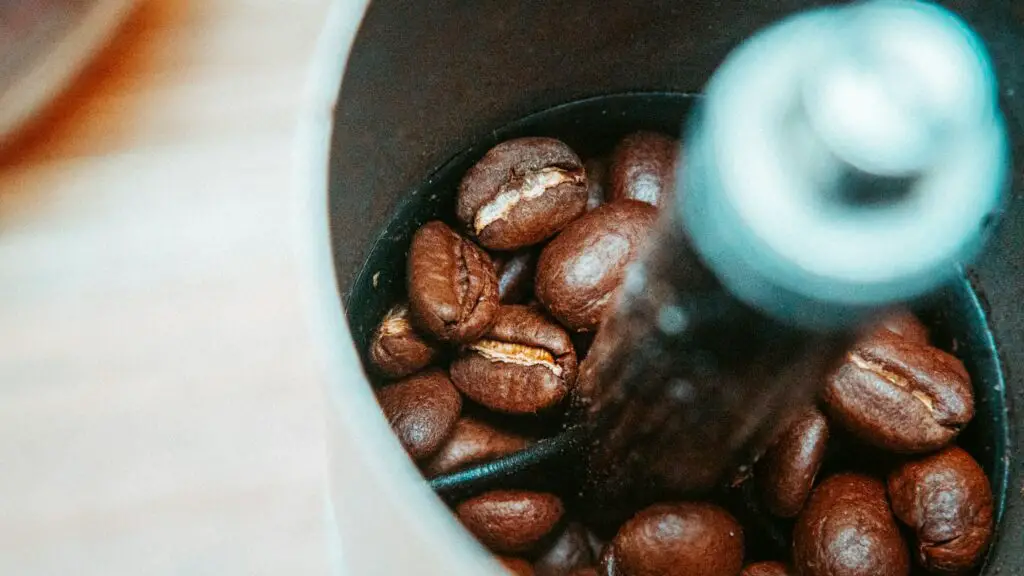Espresso, with its rich and concentrated flavor, is a beloved favorite among coffee enthusiasts worldwide.
However, brewing a perfect espresso at home can be a challenge without the right equipment or knowledge.
As a result, many coffee lovers wonder if they can use regular coffee to achieve a similar taste and experience.
In this blog post, we will delve into the age-old question: Can regular coffee be used for espresso?
The short answer is yes, regular coffee can be used for espresso if it is finely ground to a powder-like consistency similar to espresso.
However, using espresso beans specifically ground for the brewing method is recommended for a more authentic and satisfying espresso experience.
But of course, the answer isn’t quite just as simple as that so let’s explore this question a bit deeper.

Can You Make Espresso With Regular Ground Coffee?
This question often arises among coffee enthusiasts looking to recreate the rich and intense flavors of espresso without the need for specialized beans or equipment.
While it is technically possible to use regular ground coffee for espresso, there are several crucial factors to consider before embarking on this brewing journey.
One of the primary considerations is the grind size. Authentic espresso requires a very fine grind, almost resembling a powder-like consistency.
This ultra-fine grind allows for optimal extraction during the high-pressure brewing process, resulting in the signature characteristics of espresso.
If you’re using pre-ground coffee, check the label to ensure it is specifically designed for espresso brewing, as it should be ground finely enough.
However, if you’re grinding the coffee yourself, aim for the finest grind possible to maximize the chances of achieving a desirable espresso-like outcome.
It’s important to note that attempting to regrind medium or coarse ground coffee for espresso is not recommended.
Coarser grounds can cause issues with the brewing process and potentially clog the grinder, leading to an unsatisfactory extraction and potential damage to your equipment.
Therefore, if you’re committed to brewing authentic espresso, it is advisable to use espresso beans that are already ground to the necessary fine consistency.
While it is possible to make espresso-like beverages using regular ground coffee, the results may not meet the high expectations associated with true espresso.
The lack of specialized espresso beans may result in a less pronounced flavor profile, a weaker body, and a potentially bitter taste.
To achieve the full potential of espresso, investing in quality espresso beans specifically crafted for this brewing method is highly recommended.
Can All Coffee Be Used For Espresso?
The answer is yes, with a caveat.
While it is possible to use any type of coffee bean for an espresso machine, there are certain factors to consider when selecting the perfect beans to achieve the desired flavors and characteristics.
Traditionally, dark-roasted coffee beans have been favored for espresso due to their bolder and more robust flavors.
The extended roasting process enhances the rich and caramelized notes, which complement the intensity of the espresso brewing method.
However, it is important to note that the choice of roast level ultimately depends on personal preference.
Lighter roasts can offer brighter and more nuanced flavors, while medium roasts strike a balance between acidity and sweetness.
While the roast level contributes significantly to the overall taste, the coffee’s origin and variety also play a crucial role.
Different coffee-growing regions produce beans with distinct flavor profiles and characteristics.
For instance, beans from Central America often exhibit bright acidity and fruity notes, while those from South America can showcase nutty and chocolatey undertones. African coffee beans may feature vibrant acidity and floral or citrusy flavors.
It’s important to remember that using any coffee bean for espresso will yield a different flavor profile compared to other brewing methods.
The concentrated and intense nature of espresso extraction emphasizes certain qualities of the coffee, such as acidity, body, and sweetness.
Can You Put A Shot Of Espresso In Regular Coffee?

Yes! Adding a shot of espresso to your regular coffee is a simple and efficient way to elevate its strength and flavor.
Espresso, often referred to as a “shot,” is a concentrated form of coffee brewed under high pressure. It typically consists of 1 to 2 ounces of pressure-brewed coffee, utilizing approximately 1-2 tablespoons of finely ground coffee.
The brewing process itself is swift, lasting around 25 to 30 seconds, resulting in a rich, intense liquid.
One notable characteristic of a well-executed espresso shot is the layer of luscious, dark golden cream that sits atop the surface, known as “crema.”
This crema is often regarded as a sign of quality in espresso.
When you add a shot of espresso to your regular coffee, you introduce a new dimension of strength and depth.
The concentrated nature of espresso enhances the overall intensity of the beverage, adding a robust and full-bodied flavor.
Is Espresso Stronger Than Coffee?
When it comes to caffeine content, espresso often reigns as the champion of concentration.
In general, espresso packs more caffeine per ounce compared to regular coffee, making it a preferred choice for those seeking a potent caffeine kick.
However, the full picture is more nuanced than a simple comparison of caffeine content.
An average 1-ounce shot of espresso typically contains around 63-64 mg of caffeine. In contrast, a standard serving of regular brewed coffee typically holds 12-16 mg of caffeine per ounce.
Pound for pound, espresso boasts over five times the caffeine content of regular drip coffee.
However, it’s crucial to consider serving sizes. A typical espresso shot is just 1 ounce, while a standard cup of coffee ranges from 8 to 12 ounces.
When assessing overall caffeine intake, the larger serving size of coffee means that a cup of drip coffee may contain more caffeine than a single shot of espresso.
It’s a matter of quantity versus concentration.
It’s worth noting that brewing methods and the type of coffee beans used can influence the caffeine content.
Different brewing techniques, such as cold brew or French press, may yield varying caffeine levels due to differences in extraction and steeping times.
Furthermore, the variety and roast level of the coffee beans also play a role.
Darker roasts, commonly favored for espresso, tend to have slightly less caffeine than lighter roasts due to the longer roasting process that can decrease caffeine content.
What Is The Perfect Grind Size For Espresso?
To create a delicious espresso, a crucial step is grinding the coffee beans to the appropriate consistency.
Here are the steps to grind coffee for espresso, ensuring you achieve the desired results every time.

Choose a Burr Grinder
For consistent results, it is recommended to use a burr grinder rather than a blade grinder.
Burr grinders provide a more even grind, ensuring optimal extraction and flavor.
Blade grinders, on the other hand, can produce inconsistent particle sizes and generate heat that can affect the coffee’s taste.
Set the Grinder
Consult your grinder’s user manual to determine the appropriate setting for espresso grinds.
Most burr grinders offer specific settings for espresso.
For example, grinders like the Baratza Encore and Virtuoso suggest using a setting of four or five for espresso.
Adjusting the grind size may require some experimentation to find the ideal setting that suits your taste preferences.
Aim for a Fine Consistency
Espresso requires a fine grind size to maximize the extraction process.
The coffee grounds should resemble the size of sugar crystals or even finer.
This fine consistency allows for the ideal surface area contact with water during the brewing process, resulting in a concentrated and flavorful espresso shot.
Grind Just Before Brewing
To preserve the freshness and flavor of your coffee, it is best to grind the beans immediately before you’re ready to make espresso.
Coffee starts to lose its aromatic compounds and flavors soon after grinding.
By grinding just before brewing, you ensure the most flavorful and enjoyable espresso experience.
Experiment and Maintain Consistency
Finding the perfect grind size for your espresso may require some trial and error.
Remember to purge the grinder with a small amount of coffee after each grind size change.
This process ensures any residual coffee from the previous grind size is cleared, maintaining consistency in your espresso extraction.
Is Espresso Or Coffee Healthier?
Both coffee and espresso contain bioactive compounds, such as antioxidants, that have been linked to potential health benefits.
These compounds can support heart health, cognitive function, metabolic health, and even contribute to longevity.
Research suggests that regular consumption of coffee and espresso in moderate amounts may be associated with reduced risks of certain diseases, including cardiovascular conditions and neurodegenerative disorders.
However, it’s important to note that the health benefits can be undermined by the additions made to these beverages.
A cup of black coffee, without any sugar or cream, is generally considered healthier than a shot of espresso laden with sweeteners like sugar, cream, or honey.
The additional calories, fat, and sugar from these additions can have negative effects on health markers, such as blood sugar levels, cholesterol, and weight management.
To fully enjoy the potential health benefits of coffee and espresso, it is advisable to consume them in their purest form, without excessive additives.
If you prefer a sweeter taste, consider using natural sweeteners in moderation or opting for healthier alternatives like cinnamon or unsweetened plant-based milks.
Conclusion
While it is technically possible to use regular coffee for espresso, the best results are achieved by using espresso beans ground to a fine consistency.
The differences in flavor and brewing method make espresso beans the preferred choice for an authentic and satisfying espresso experience.
So, next time you crave that perfect shot of espresso, opt for the right beans to elevate your brewing game and savor the true essence of this beloved coffee delight.


